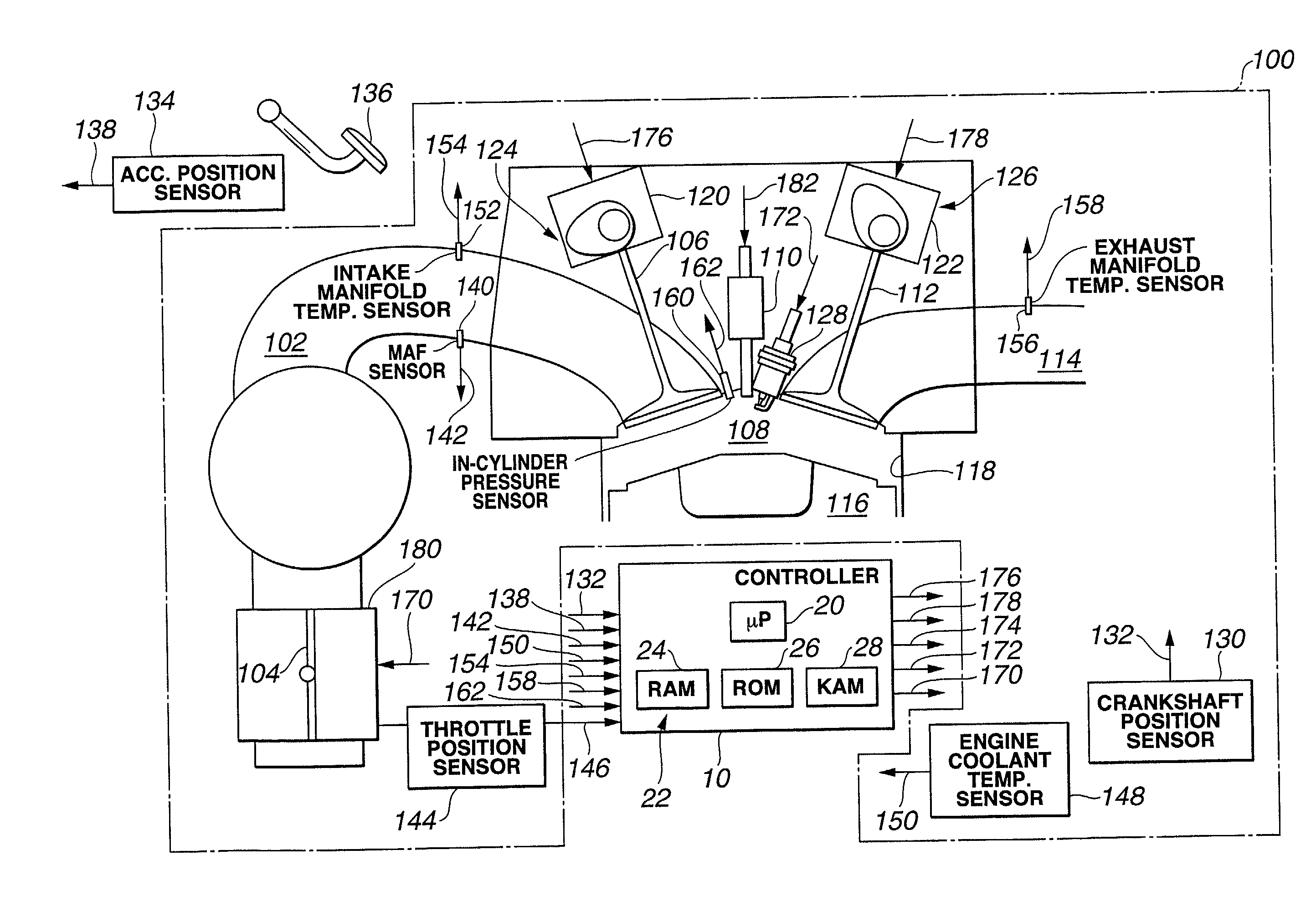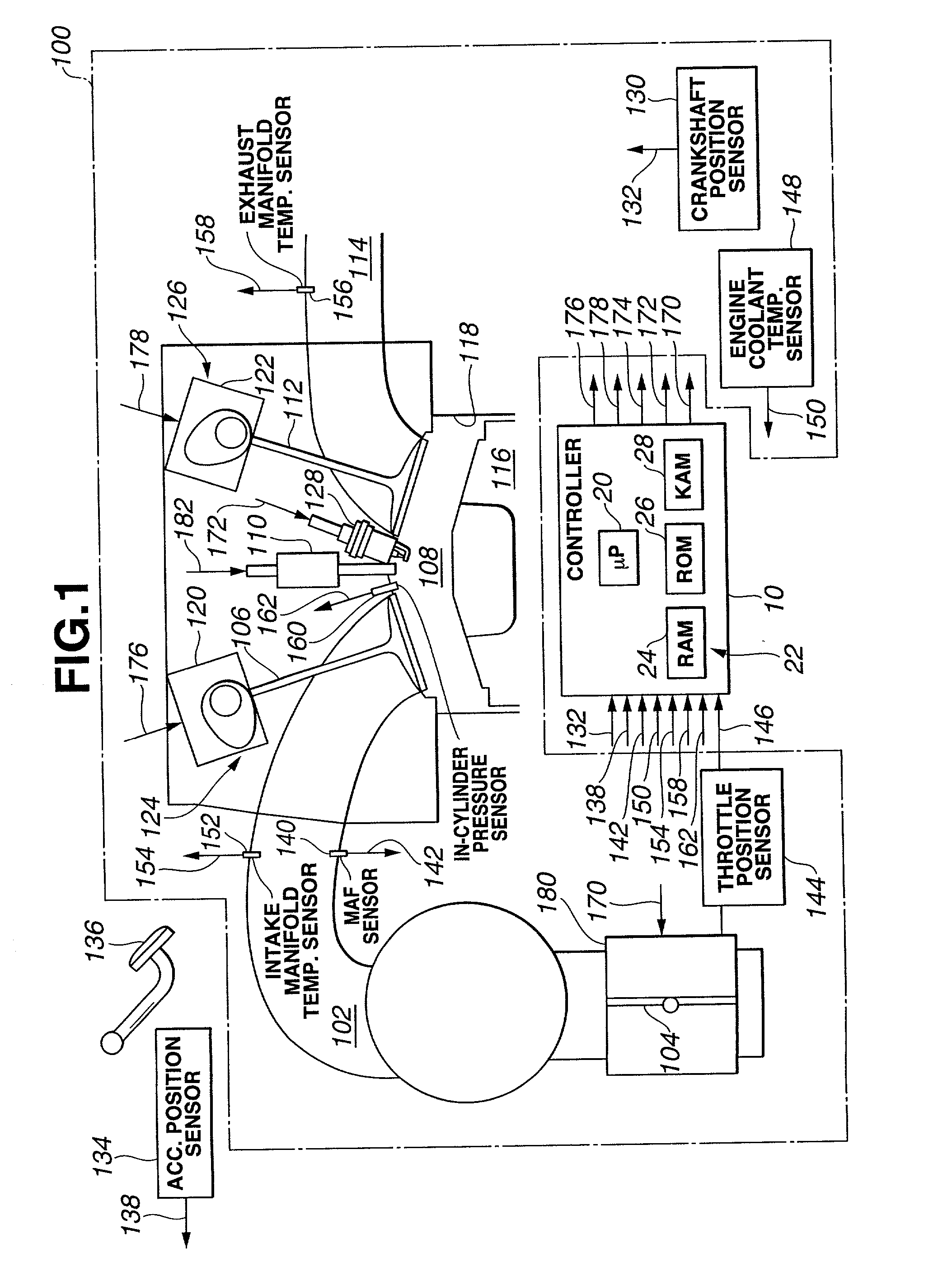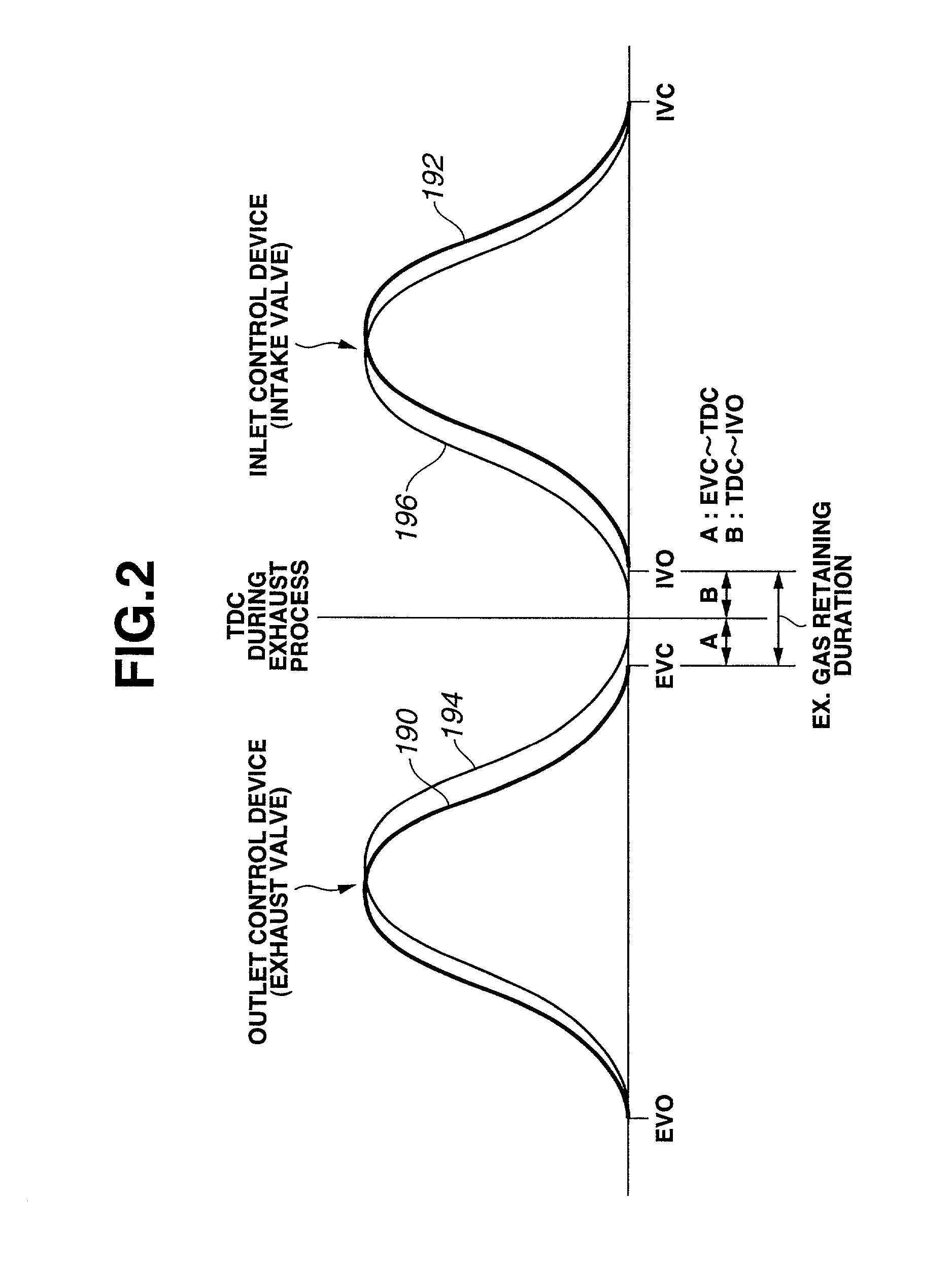Intelligent control to stabilize auto-ignition combustion without rapid pressure increase
a technology of intelligent control and auto-ignition combustion, applied in the direction of electrical control, machines/engines, output power, etc., can solve the problems of reducing the pressure around the top dead center during the compression process, unable to solve the problem of stabilizing auto-ignition combustion, and prolonging the combustion duration
- Summary
- Abstract
- Description
- Claims
- Application Information
AI Technical Summary
Benefits of technology
Problems solved by technology
Method used
Image
Examples
Embodiment Construction
[0050] FIG. 1 shows an electronic engine controller (ECC) 10 and an internal combustion engine 100, which comprises a plurality of cylinders, one of which is shown in FIG. 1. Engine 100 draws an intake air charge through intake manifold 102 past a throttle plate 104, and intake valve 106 and into combustion chamber 108. An air / fuel mixture, which consists of the air charge and fuel injected by fuel injector 110 of a fuel injection device, is ignited in combustion chamber 108, and exhaust gas resulting from combustion of the air / fuel mixture is transported past exhaust valve 112 through exhaust manifold 114. A piston 116 is coupled to a crankshaft, not shown, and moves in a linear fashion within a cylinder defined by cylinder walls 118.
[0051] Valve controllers 120 and 122 are provided to actuate intake and exhaust valves 106 and 112. In a preferred embodiment, intake valve 106 and valve controller 120 constitute an inlet control device 124 for controlling flow of intake air into comb...
PUM
 Login to View More
Login to View More Abstract
Description
Claims
Application Information
 Login to View More
Login to View More - R&D
- Intellectual Property
- Life Sciences
- Materials
- Tech Scout
- Unparalleled Data Quality
- Higher Quality Content
- 60% Fewer Hallucinations
Browse by: Latest US Patents, China's latest patents, Technical Efficacy Thesaurus, Application Domain, Technology Topic, Popular Technical Reports.
© 2025 PatSnap. All rights reserved.Legal|Privacy policy|Modern Slavery Act Transparency Statement|Sitemap|About US| Contact US: help@patsnap.com



